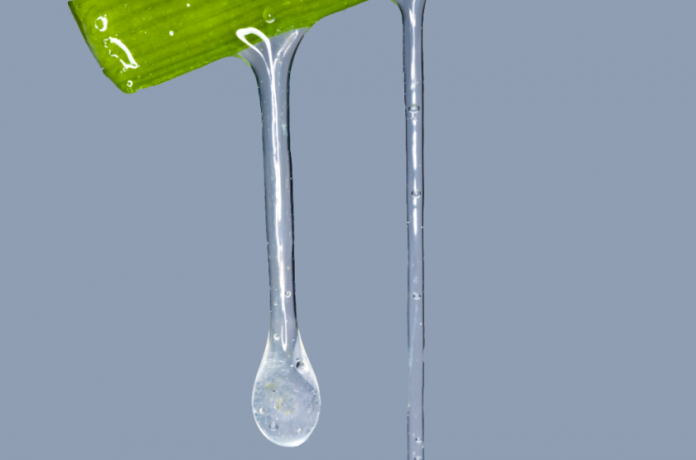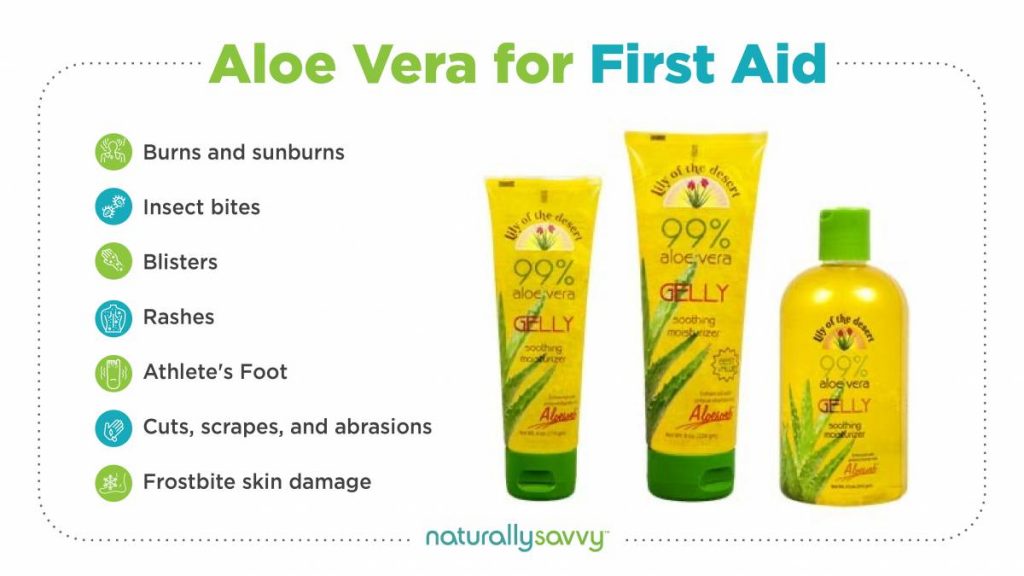
Raise your hand if you have an aloe vera plant on the windowsill in your kitchen. How about on your patio, sun porch, front steps, garden? Do you have aloe vera gel or juice in your house in any form? I hope you answered yes to at least one of these possibilities, and if you didn’t, then it’s time to introduce this important first aid plant into your space.
If you did answer yes, you may be using aloe vera for burns, which is probably the number one first aid application for this succulent. And for good reason: it’s easy and it works.
But aloe vera is a great plant (or product) to keep around for other first aid needs as well. Since you can’t carry a plant around with you, it’s a wise choice to stock your portable first aid kit with a pure aloe vera gel product.
Read about the many healing benefits of aloe vera
Burns and sunburns
When treating first- and second-degree burns, first run cold water over the affected skin or immerse the burned skin in cool water. Then apply either the clear gel from the leaves of the plant or a pure aloe vera gel product.
To harvest gel from the plant, use a sharp knife to cut off a lower leaf located near the center stalk and remove the spines. Split the leave lengthwise and slice into the leave with the tip of the knife. Apply the gel directly on the skin, which will absorb it rather quickly. You can use the same approach when treating sunburn.
Insect bites
When you are bitten by an insect or similar pest, whether it’s a mosquito, bee, hornet, gnat, ant, centipede, or biting flies, the body reacts by sending histamines to the skin’s surface. Along with the histamines comes the itching, swelling, pain, and/or redness. That’s when it’s time for aloe vera gel to come to the rescue.
Aloe vera gel can provide some relief from all of these responses to insect bites. If, however, you experience abnormal swelling, elevated heart rate, trouble breathing, and disorientation, you are likely having an allergic reaction and should seek medical assistance immediately.
Blisters
Blisters are an opportunity for infection, so it’s important to provide a barrier to protect against the invasion of damaging organisms. Aloe vera has several properties that can provide this protection. For example:
- It is an astringent, because it helps control the secretion of excess serum that can cause a blister to break open
- It interferes with bacterial growth and also kills these microorganisms on the skin
- It prevents the growth of fungus on the skin and protects the area around the blister from encroaching fungus
- It soothes the outer layer of skin from irritation
- It prevents the growth of viruses from invading the skin
Apply aloe vera gel (fresh or commercial gel) gently to blistered areas. Do not apply directly on any blisters that have opened; simply use the gel in the area surrounding the blister. Reapply as needed but do not use aloe vera gel for more than 10 consecutive days. If you need to continue treatment, wait 5 days before returning to treatment.
Read about 7 ways to use aloe vera to improve your health

Rashes
Several natural compounds in aloe vera gel and juice are responsible for its ability to heal the skin and help manage some types of rashes. Mannose and glucose, for example, are sugars that assist with healing. Two sterols, namely phenylalanine and tryptophane, have anti-inflammatory abilities, as do compounds called anthraquinones. If a rash is caused by an infection, the B vitamins and vitamin C, as well as zinc found in aloe vera can help fight the invaders.
A common skin rash called prickly heat rash responds well to aloe vera. This rash triggered by hyperactive sweat glands or glands that are blocked by excessive sweat. Prickly heat rash looks like little blisters, and aloe vera gel both cools the skin while helping open up the sweat pores and prevent the rash from spreading. Poison ivy rash also responds well to aloe vera gel and assists in relieving the itching as well as reducing inflammation.
Athlete’s foot
Athlete’s foot is a fungal infection that is typically accompanied by dry, cracked skin. An easy recipe to prepare so you can treat athlete’s foot consists of ¼ cup pure aloe vera juice plus 10 drops each of lavender and myrrh essential oils. Mix well and apply to the affected area two to three times daily. Cover the treated foot with an old sock. This is a good treatment to apply just before retiring for bed.
Cuts, scrapes and abrasions
When you compromise your skin with minor cuts, scrapes, or abrasions, aloe vera gel can help. Aloe vera gel contains polysaccharides, which promotes tissue regrowth, while glycoproteins both relieve pain and fight inflammation.
Researchers have documented the ability of aloe vera to assist in the healing of various minor wounds. In BioMed Research International, for example, experts noted that along with polysaccharides and glycoproteins, glucomannan is another compound in aloe vera that helps with wound healing because it works to build new collagen and tissue. The gel also contains substances that enhance the secretion of insulin-like growth factors in the body, which assist with the regrowth of blood vessels.
Frostbite damage
In a 1990 study from the University of Texas Medical School, researchers reported on the ability of aloe vera cream to treat frostbite. One of the first things necessary to treat frostbite successfully is to quickly rewarm the affected area to preserve tissue from cellular injury. You also should help prevent the tendency for constriction of the blood vessels in the affected area, and the application of aloe vera cream can help with this response.
[Editor's Note: Our favorite brand of aloe to have in our first aid kit is Lily of the Desert. Their quality is amazing and their aloe gelly is 99% aloe and we use them in our boo-boo cubes.]










